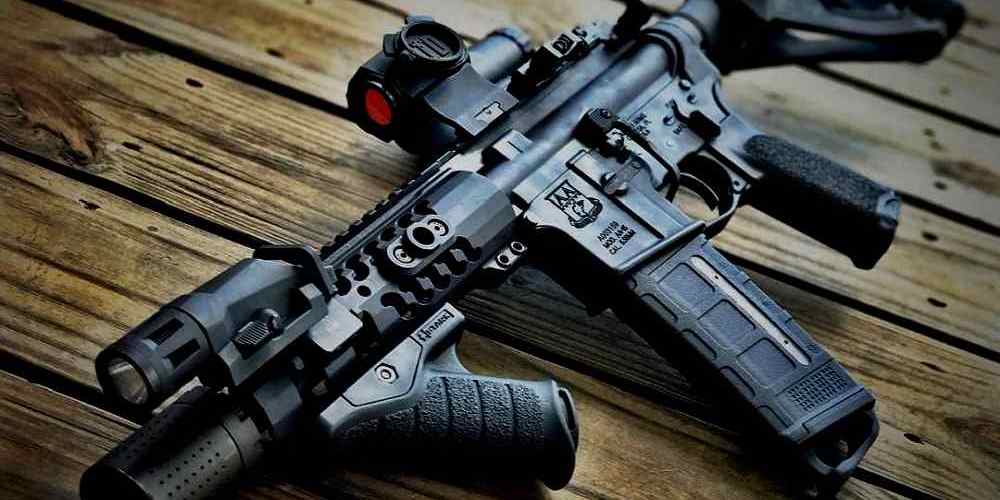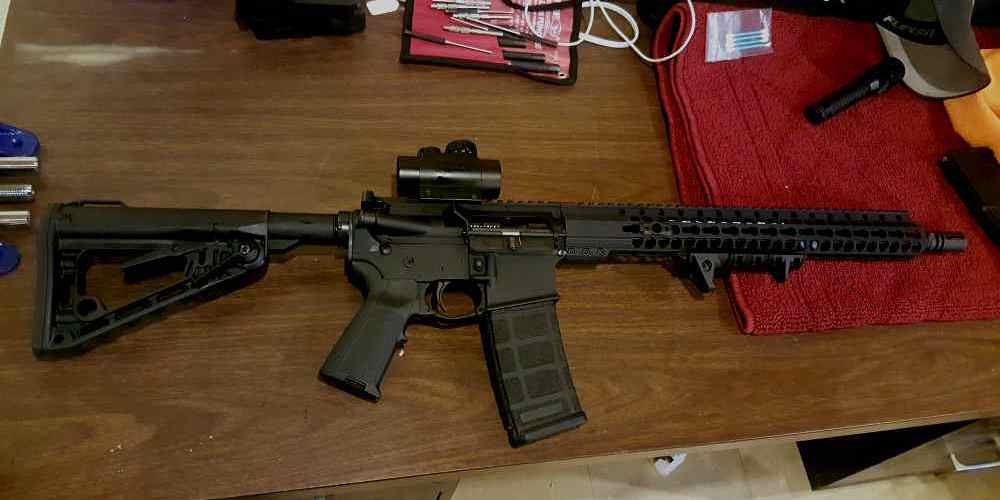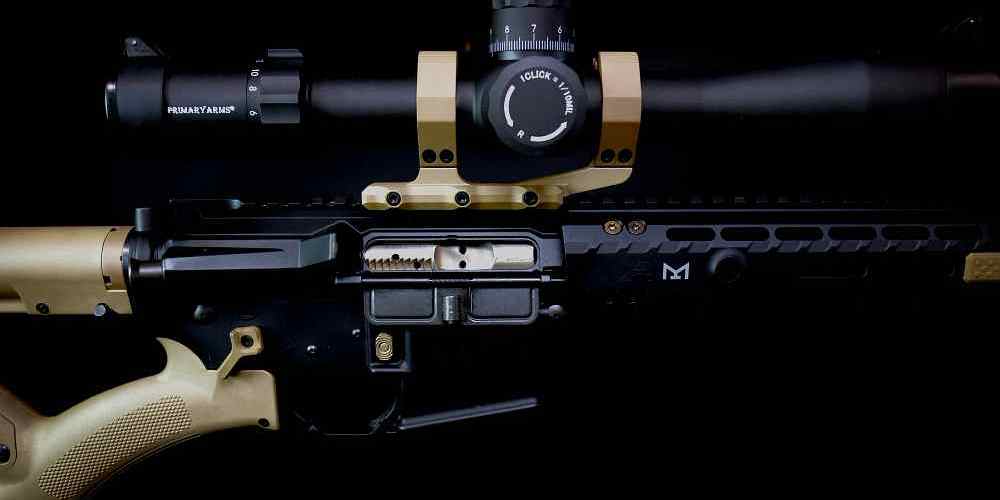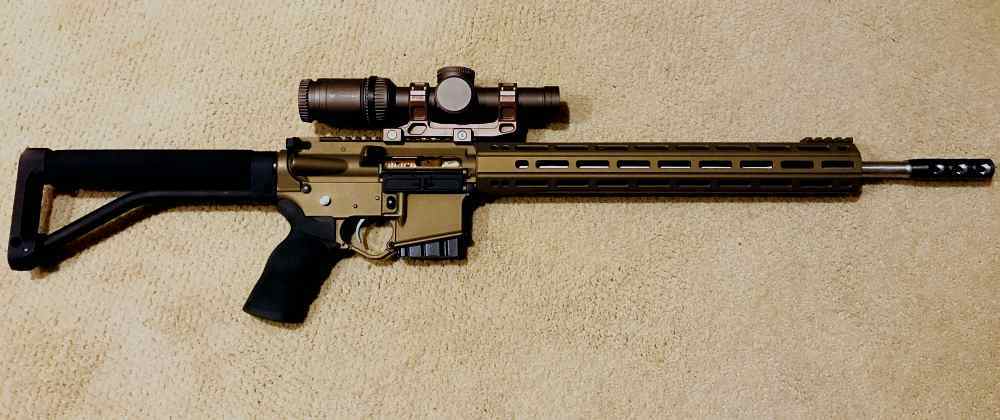“Building an AR15? Avoid rookie mistakes with these essential tips.”
Using Incorrect Parts
Building your own AR15 can be a rewarding experience, allowing you to customize your rifle to your exact specifications. However, for novice builders, there are some common mistakes that can easily be avoided. One of the most crucial aspects of building an AR15 is using the correct parts. Using incorrect parts can not only lead to a malfunctioning rifle but can also be dangerous. In this article, we will discuss some of the most common AR15 build mistakes to avoid when it comes to using incorrect parts.
One of the first mistakes novice builders often make is using cheap or low-quality parts. While it may be tempting to save money by purchasing inexpensive parts, this can lead to a host of issues down the line. Cheap parts are more likely to break or malfunction, leading to a less reliable rifle. It is important to invest in high-quality parts from reputable manufacturers to ensure the longevity and reliability of your AR15.
Another common mistake is using parts that are not compatible with each other. The AR15 platform is highly modular, allowing for a wide range of customization options. However, not all parts are interchangeable. It is crucial to do your research and ensure that the parts you are using are compatible with each other. Using incompatible parts can lead to malfunctions and potentially dangerous situations.
One area where compatibility is especially important is with the upper and lower receivers. The upper and lower receivers must be properly matched to ensure a tight fit and proper functioning of the rifle. Using mismatched receivers can lead to issues such as poor accuracy, feeding problems, and even safety concerns. Always double-check that your upper and lower receivers are compatible before assembling your AR15.
Another common mistake is using the wrong buffer and buffer spring. The buffer and buffer spring play a crucial role in the functioning of the AR15, helping to absorb recoil and cycle the action. Using the wrong buffer and buffer spring can lead to cycling issues and decreased reliability. It is important to use the correct buffer and buffer spring for your specific build to ensure optimal performance.
One final mistake to avoid is using incorrect gas system components. The gas system is a critical component of the AR15, regulating the flow of gas to cycle the action. Using the wrong gas block, gas tube, or gas key can lead to cycling issues and decreased reliability. It is important to use the correct gas system components for your specific build to ensure proper functioning of your AR15.
In conclusion, when building an AR15, it is crucial to use the correct parts to ensure the reliability and safety of your rifle. Avoiding common mistakes such as using cheap parts, incompatible parts, incorrect buffer and buffer spring, and incorrect gas system components can help you build a high-quality AR15 that will perform flawlessly. Do your research, invest in high-quality parts, and double-check compatibility to avoid these common AR15 build mistakes. Happy building!
Improper Assembly Techniques
Building your own AR15 can be a rewarding experience, but it’s important to avoid common mistakes that novice builders often make. Improper assembly techniques can lead to malfunctions, safety hazards, and even damage to your firearm. In this article, we’ll discuss some key mistakes to avoid when assembling your AR15.

One of the most common mistakes novice builders make is not properly torquing down the barrel nut. The barrel nut is a critical component that secures the barrel to the upper receiver. If it’s not tightened down to the correct torque specifications, it can lead to accuracy issues and even cause the barrel to come loose during firing. Make sure to use a torque wrench and follow the manufacturer’s recommendations when tightening the barrel nut.
Another common mistake is not properly aligning the gas block with the gas port on the barrel. This can lead to gas leakage, which can affect the cycling of the firearm and cause malfunctions. Make sure to carefully align the gas block with the gas port and use a gas tube alignment tool to ensure proper alignment.
Improperly staking the gas key on the bolt carrier group is another mistake to avoid. The gas key is a critical component that directs gas from the barrel to cycle the action of the firearm. If it’s not properly staked, it can come loose during firing and cause malfunctions. Make sure to use a proper staking tool and follow the correct staking procedure to ensure a secure gas key.
Not properly headspacing the barrel is another common mistake that novice builders make. Headspacing is the process of ensuring that the distance between the bolt face and the chamber is correct. Improper headspacing can lead to safety hazards and malfunctions. Make sure to use headspace gauges and follow the correct headspacing procedure to ensure a safe and reliable firearm.
Using incorrect or low-quality tools is another mistake to avoid when assembling your AR15. Using the wrong tools can lead to damaged components and poor fitment, which can affect the performance of your firearm. Make sure to use high-quality tools that are specifically designed for AR15 assembly and follow the manufacturer’s recommendations.
Not properly lubricating your AR15 is another mistake that novice builders often make. Proper lubrication is essential for the smooth operation of your firearm and can help prevent wear and corrosion. Make sure to use a high-quality gun oil or grease and apply it to all moving parts of your AR15.
In conclusion, avoiding these common mistakes can help ensure a safe and reliable AR15 build. By following proper assembly techniques and using the correct tools, you can build a high-quality firearm that will perform well for years to come. If you’re unsure about any aspect of the assembly process, don’t hesitate to seek help from a knowledgeable gunsmith or experienced builder. Happy building!
Lack of Proper Maintenance
Building your own AR15 can be a rewarding experience, but it’s important to avoid common mistakes that novice builders often make. One area where many beginners fall short is in the maintenance of their rifle. Proper maintenance is crucial for ensuring the longevity and performance of your AR15. In this article, we’ll discuss some common maintenance mistakes to avoid when building your AR15.
One of the most common mistakes novice builders make is neglecting to clean their rifle regularly. A dirty AR15 can lead to malfunctions and decreased accuracy. It’s important to clean your rifle after every use to remove dirt, debris, and fouling that can build up in the barrel and other components. A clean rifle will function more reliably and accurately, so make sure to invest in a good cleaning kit and take the time to properly clean your AR15 after each range session.
Another maintenance mistake to avoid is using the wrong lubricant on your rifle. Proper lubrication is essential for keeping your AR15 running smoothly and preventing wear and tear on the moving parts. However, using the wrong type of lubricant can actually do more harm than good. Make sure to use a high-quality gun oil or grease that is specifically designed for firearms. Avoid using household oils or lubricants, as they can attract dirt and debris and cause your rifle to malfunction.
In addition to cleaning and lubricating your rifle, it’s important to regularly inspect and replace worn or damaged parts. Over time, the components of your AR15 will wear out and need to be replaced. Ignoring worn or damaged parts can lead to malfunctions and potentially dangerous situations. Make sure to regularly inspect your rifle for signs of wear, such as cracks, dents, or rust. If you notice any issues, replace the affected parts immediately to ensure the safety and reliability of your AR15.
One maintenance mistake that many novice builders make is over-tightening screws and bolts. While it’s important to ensure that all components are securely fastened, over-tightening can actually damage the threads and weaken the integrity of the parts. Use a torque wrench to tighten screws and bolts to the manufacturer’s specifications to avoid damaging your rifle. If you’re unsure of the proper torque settings, consult the owner’s manual or seek advice from a knowledgeable gunsmith.
Finally, don’t forget to store your AR15 properly when not in use. Improper storage can lead to rust, corrosion, and other damage to your rifle. Make sure to store your AR15 in a cool, dry place away from moisture and humidity. Consider investing in a gun safe or case to protect your rifle from dust, dirt, and other contaminants. Regularly inspect your rifle for signs of rust or corrosion, and take steps to prevent further damage if necessary.
In conclusion, proper maintenance is essential for keeping your AR15 running smoothly and reliably. By avoiding common maintenance mistakes and taking the time to care for your rifle properly, you can ensure that your AR15 will perform at its best for years to come. Remember to clean, lubricate, inspect, and store your rifle correctly to avoid costly repairs and potential safety hazards. Building your own AR15 is a rewarding experience, so make sure to take care of your rifle and enjoy the benefits of a well-maintained firearm.
Ignoring Safety Precautions
Building your own AR15 can be a rewarding and fulfilling experience, but it’s important to approach the process with caution and attention to detail. One of the most crucial aspects of building an AR15 is ensuring that you follow all safety precautions to prevent accidents and ensure the reliability of your firearm.
One common mistake that novice builders make is ignoring safety precautions when assembling their AR15. It’s easy to get caught up in the excitement of building your own firearm, but it’s essential to prioritize safety above all else. One of the most important safety precautions to follow is wearing proper eye and ear protection while working on your AR15. This may seem like a minor detail, but it can make a significant difference in protecting your eyes and ears from potential injury.
Another safety precaution that novice builders often overlook is properly securing their work area. It’s crucial to have a clean and organized workspace to prevent accidents and ensure that you can easily access all the tools and components you need. Make sure to keep your work area free of clutter and distractions, and always double-check that you have all the necessary tools and parts before starting your build.
When assembling your AR15, it’s also important to follow the manufacturer’s instructions carefully. Each component of an AR15 is designed to work together in a specific way, and deviating from the manufacturer’s guidelines can lead to malfunctions or even catastrophic failures. Take the time to read through the instructions for each part of your AR15 build and follow them step by step to ensure that your firearm functions safely and reliably.
One safety precaution that should never be ignored is checking your work for any potential issues or mistakes. Before test-firing your AR15, take the time to inspect each component for proper installation and alignment. Look for any signs of wear or damage, and make sure that all screws and pins are tightened securely. It’s also a good idea to have a knowledgeable friend or mentor inspect your work before firing your AR15 for the first time.
Finally, always treat your AR15 with the respect it deserves. Remember that you are building a powerful and potentially dangerous weapon, and it’s essential to handle it with care and caution. Always keep your AR15 pointed in a safe direction, and never point it at anything you don’t intend to shoot. When not in use, store your AR15 in a secure location away from children and unauthorized users.
In conclusion, building your own AR15 can be a fun and rewarding experience, but it’s crucial to prioritize safety throughout the process. By following all safety precautions, carefully reading and following the manufacturer’s instructions, and treating your AR15 with respect, you can ensure that your firearm functions safely and reliably. Remember that safety should always be your top priority when building and using an AR15.
Not Seeking Professional Help when Needed
Building your own AR15 can be a rewarding and satisfying experience, but it can also be overwhelming, especially for novice builders. There are many factors to consider, from choosing the right parts to assembling them correctly. One common mistake that novice builders make is not seeking professional help when needed.
It’s important to remember that building an AR15 is not a simple task, and there are many technical aspects that require expertise. If you’re unsure about something or if you encounter any problems during the build process, don’t hesitate to seek help from a professional. This could be a gunsmith, a knowledgeable friend, or even an online forum where experienced builders can offer advice.
One area where novice builders often struggle is in selecting the right parts for their AR15 build. With so many options available on the market, it can be difficult to know which parts are compatible with each other and which ones will work best for your specific needs. This is where professional help can be invaluable. A gunsmith or experienced builder can help you choose the right parts based on your budget, intended use, and personal preferences.
Another common mistake that novice builders make is not properly assembling their AR15. This can lead to malfunctions, safety issues, and even damage to the firearm. If you’re not confident in your ability to assemble the rifle correctly, it’s best to seek help from a professional. They can ensure that all parts are installed correctly, that the rifle is properly lubricated, and that it functions as it should.
Additionally, novice builders often overlook the importance of proper maintenance and care for their AR15. Regular cleaning, lubrication, and inspection are essential to keep your rifle in good working condition. If you’re unsure about how to properly maintain your AR15, don’t hesitate to ask for help. A gunsmith or experienced builder can show you the proper techniques and recommend the right products to use.
Finally, novice builders should be aware of the legal requirements and regulations surrounding AR15 builds. Depending on where you live, there may be specific laws governing the assembly, modification, and ownership of firearms. It’s important to familiarize yourself with these laws and ensure that your build complies with them. If you’re unsure about the legal aspects of building an AR15, seek advice from a professional or consult with local authorities.
In conclusion, building an AR15 can be a fun and rewarding experience, but it’s important to approach it with caution and seek help when needed. Novice builders should not hesitate to ask for assistance from a professional when they encounter difficulties or uncertainties during the build process. By seeking help, you can avoid costly mistakes, ensure the safety and functionality of your rifle, and enjoy the process of building your own AR15.




